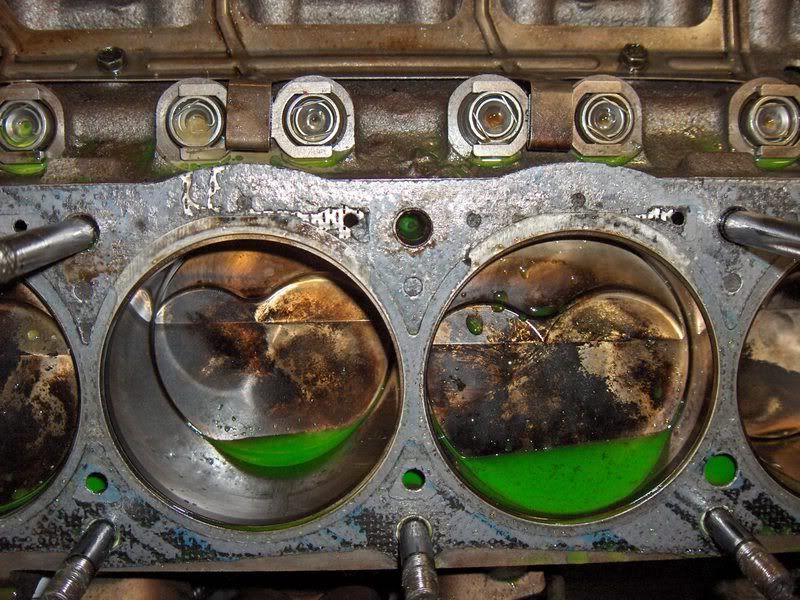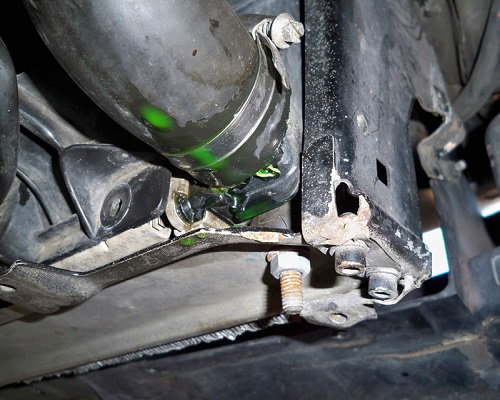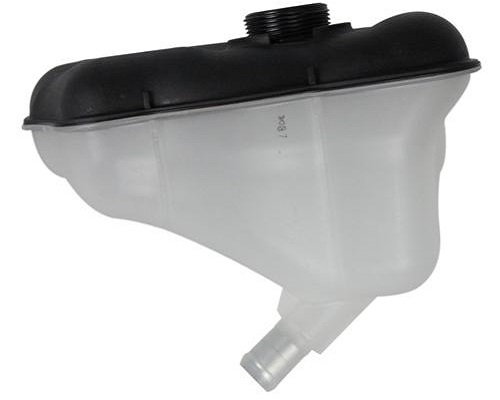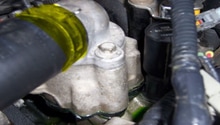Ford Mustang V6 2005-2014: Why is My Car Leaking Coolant?
A coolant leak should be treated as a serious problem. Find out some possible sources of the leak and how to fix them in the article below.
This article applies to the Ford Mustang V6 (2005-2014).
You get out of the car and you notice coolant on the driveway or garage floor. Don't panic! Instead, use the following approach to guide your search for the coolant leak and possible fixes. The coolant in your Mustang circulates throughout the engine block and radiator to keep temperatures down. Once your car is up to the thermostat's actuation temperature, the flow of coolant begins and the system becomes active. If you notice your engine leaking coolant, check your coolant level to make sure that you have enough to safely drive the car if you plan on continuing to drive it. If you run your engine low on coolant, your engine will overheat and this can lead to head gasket failure and many other detrimental issues. To avoid this problem, fix your coolant leak as soon as possible to be back on the road with a safe and reliable Mustang!

Materials Needed
- Ratchet with extension
- 5/8" spark plug socket
- 10mm socket
- Flat head screwdriver
- Gloves and goggles
- U.V. light and dye
Step 1 – Can you see the leak's source?
The best way to find a coolant leak, if it is visible, is to simply trace it to its source, so you get a better idea of where the leak is coming from. Before starting, perhaps the most important precaution you can take when working with coolant is to make sure the car is cooled down. As temperature increases in the cooling system, pressure increases and can cause dangerous situations. Make sure that you are in a well-lighted area with a flashlight, so you can diagnose the leak effectively. Also, make sure you are wearing gloves and goggles because coolant is sometimes not safe for human contact. If you do not visually see a leak, then move on the to the next steps.

Pro Tip
Use a U.V. light and dye in the cooling system to trace sources of leaks.
If you have found the source of your leak, then skip the following steps and fix the issue.
Step 2 – Is your head gasket leaking?
Do you have a check engine light to accompany the coolant leak? This may be an important sign suggesting that your head gasket is leaking. A head gasket failure is a serious issue, as it can lead to engine failure and the repair is quite extensive. If your coolant and oil have signs of mixing or you see white smoke puffing out of your tailpipes at start-up, check for head gasket failure. If your engine is running fine without any codes, then it is most likely not a head gasket. If it is a head gasket replacement, be prepared to dedicate a day or two of work to get your Mustang running right!

Pro Tip
Use a professional if you are not comfortable with the magnitude of this repair.
Step 3 – Is your thermostat housing leaking?
Unfortunately, this is a common problem on the S197 Mustangs. Since Ford used a hard plastic for their thermostat housing, over time and heat cycles, the plastic cracks and leads to following leak. If the area around your thermostat housing is damp or has deposits, then this is most likely the issue. If there are no signs of leakage around the housing, then move on to the next step of the diagnosis.

Pro Tip
Use quality replacement parts since you don't want to replace this housing twice.
Step 4 – Are radiator hoses and coolant overflow tank leaking?
If you notice residue in the engine bay, or on the radiator hoses and coolant overflow tank themselves, then this may be the issue.
After hundreds of heat cycles, the rubber hoses that transport your coolant become stiff and brittle, developing small or large leaks. If its a large leak, its extremely obvious, since there will be piles of smoke bellowing out of your hood. If its a small leak, trace your hoses to find which one is causing an issue. Another potential source of a leak is the coolant overflow tank. This tank can also develop leaks over time due to heat cycles. Lastly, your overflow tank cap should be checked if you suspect your are loosing coolant near the overflow tank. This cap needs to hold in pressure and can wear out over time. They are cheap to replace and are good insurance for the future of your Mustang!

Figure 4. Radiator hose leak. 
Figure 5. Coolant overflow tank.
Related Discussions
- Coolant Leak Head Gasket - MustangForums.com
- Coolant Leak/Maintenance - MustangForums.com
- Coolant Leak Not Water Pump - MustangForums.com






